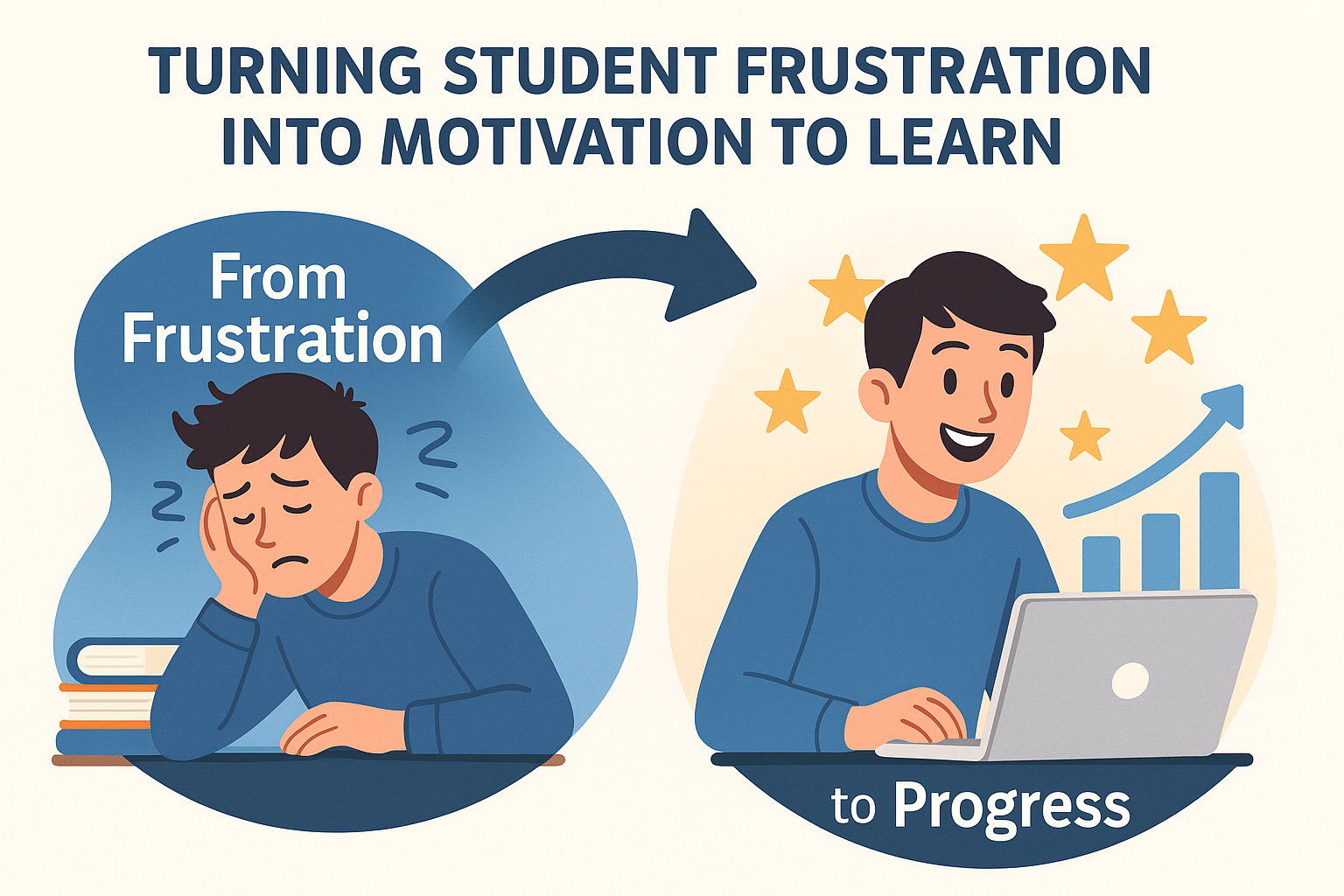Discover how to evaluate and demonstrate real student progress, transforming frustration into motivation and enhancing engagement.
Frustration is one of the most significant barriers to learning the English language. In schools and language courses, many students become discouraged when they don’t see the results of their efforts.
This feeling can erode confidence, reduce engagement, and even lead them to drop out of the program. But why does this frustration happen? And how can educational managers help transform it into motivation so that real learning occurs?
Here’s what we’re going to cover in this article:
Why does frustration happen in English learning?
It’s common for students to start with high expectations. They want to speak fluently in a few months, impress in meetings, or communicate like natives when travelling.
But learning English—or any language—is a gradual process. Progress can seem invisible at first. This gap between expectations and reality creates frustration.
Main signs of student frustration
Frustration manifests in various ways, including missed classes, lower participation, constant complaints about a lack of progress, anxiety, and discouragement in speaking activities.
Behind these behaviours lies the feeling that they’re not advancing—even when they are.
Why is it so hard to see one’s progress?
In practice, every student improves, even if the progress is slow. The problem is that our typical ways of evaluating progress often fail to make these improvements visible.
In many cases, English assessments are limited to written tests, vocabulary lists, and grammar rules. This overlooks oral communication and speaking fluency—essential elements for real language use.
Without concrete data, students feel stuck. Even if they’re better at understanding conversations, ordering coffee in English, or participating in meetings, they don’t recognize their progress without clear feedback.
The importance of fair and continuous assessment
To deal with frustration, it’s essential to offer ongoing, fair evaluations.
Assessments should show real progress and help students understand what they’ve already achieved and what they still need to improve. This makes all the difference in maintaining high engagement.
When assessment focuses only on final results or grammar, students feel that they only have value if they’re perfect. But when they see their progress in concrete areas, they realize that every step counts—and that builds confidence and motivation.
How to turn frustration into motivation
Educational managers can play a key role in this process. Some important steps:
- Emphasize that progress is built gradually. Show students that gains happen in stages and that every small win matters.
- Personalize instruction to meet each student’s real needs. This reduces comparisons and helps lower discouragement.
- Actively listen to student concerns and offer support and empathy. Feeling heard helps ease frustration.
- Present concrete data on student progress so they know they’re truly advancing—not just hearing generic praise.
The role of oral assessment in fluency
Much of the frustration with English comes from speaking. Many students can read or write well but feel blocked when it comes to conversation.
Confidence in speaking doesn’t come from theory alone—it grows through practice, interaction, and the correct feedback.
Assessing English fluency is much more than asking memorized questions. It means evaluating naturalness, clarity, and contextual adaptation.
However, to be genuinely fair, this assessment must be impartial and based on data that reflects real communication ability—not just aesthetics or the absence of an accent.
FluencyFlow: showing real progress
Tools like FluencyFlow offer a critical step in turning frustration into motivation.
By using artificial intelligence to analyze real speech recordings, it measures key elements of English fluency:
- Response time
- Naturalness
- Coherence and clarity
- Vocabulary richness
The major differentiator is that all this is done impartially—without penalizing accents or regional differences—focusing on actual communication ability, not surface-level features.
For students, this means having access to concrete data that proves their progress, even if it’s incremental. They begin to understand that they’re building fluency in a solid, consistent way.
For managers, the reports generated by FluencyFlow are essential for:
- Offering feedback grounded in facts
- Adjusting teaching plans in a personalized way
- Creating a learning environment that’s fair, transparent, and motivating
This clarity turns guesswork into confidence, making all the difference in student motivation and English learning success.
Conclusion
Frustration isn’t just a student problem—it affects the entire learning environment and how institutions position themselves as true partners in student development.
Educational managers have the power to turn this frustration into motivation—but to do that, they need tools that go beyond guesswork and offer real data about student progress.
With solutions like FluencyFlow, it’s possible to create a virtuous cycle: more clarity, more confidence, more engagement.
And ultimately, more students speak English with the confidence and fluency they’ve always wanted.
Want to see how FluencyFlow can help your school measure fluency in a fair and motivating way?
Get in touch with our team and discover how to transform every challenge into tangible progress.




